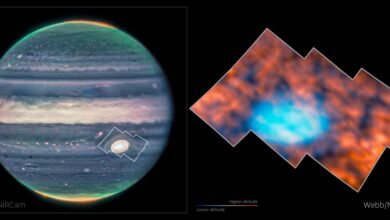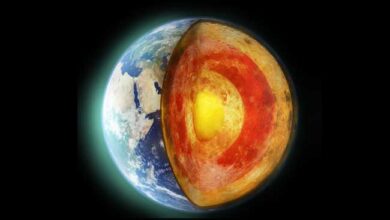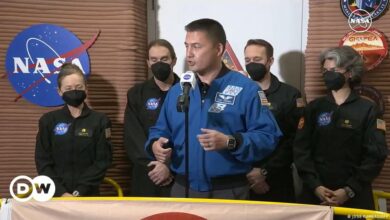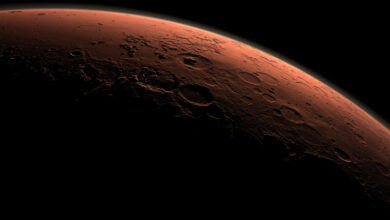Beyond the aurorae: How solar flares spill out across the Solar System
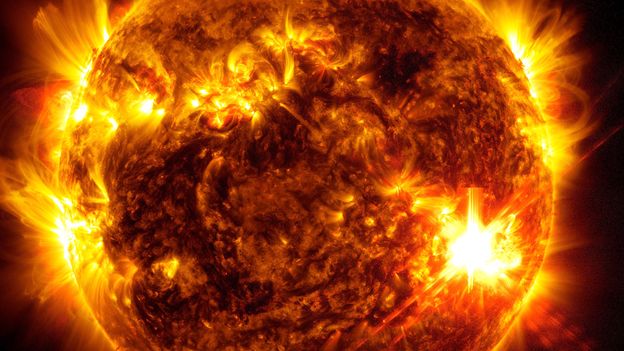
[ad_1]
Recent work by Yardley and her colleagues, using data from Solar Orbiter, suggests that the Sun’s atmosphere, its corona, plays a role in the speed of the solar wind. Regions where the magnetic field lines, the direction of the field and charged particles are “open” – stretching out into space without looping back – provide a highway for solar wind to reach high speeds. Closed loops over some active regions – where the magnetic field lines have no beginning and end – can occasionally snap, producing slow solar wind. The variability in the slow solar wind seems to be driven by the unpredictable flow of plasma inside the Sun, which makes the magnetic field particularly chaotic.
The X-class flares and coronal mass ejections seen in May transformed the interplanetary medium as they flung out material across the solar system. Solar Orbiter detected a huge spike in ions moving at thousands of kilometres per second immediately after the 20 May flare. Computers on board other spacecraft – the BepiColombo probe, which is currently on a seven-year journey to Mercury, and Mars Express, in orbit around the Red Planet – both saw a dramatic increase in the number of memory errors caused by the high energy solar particles hitting the memory cells.
The day after the coronal mass ejection, magnetometers on board the Solar Orbiter also saw large swings in the magnetic field around the spacecraft as a huge bubble of plasma made up of charged particles thrown out from by the event washed past it at 1,400km/s (870 miles/s).
Increased solar activity is a boon for scientists. “If you track the number of papers produced by solar physicists, you can almost see an 11-year cycle in there,” says Owens. “We are all more scientifically productive when there’s a lot of activity to study.”
As the Sun continues into solar maximum, the Solar System will see more and more activity streaming from its surface. Yet while all the planets witness at least some of the activity, our planet bears the brunt more than most. “Earth is slightly unique in that space weather can have interesting effects on human technologies,” says Wild. “There’s an extra dimension here on Earth.”
Perhaps one day those anthropogenic effects might be felt elsewhere, too. “If you’re going to fly to Mars and you have a six-month flight through the interplanetary environment, you’re going to potentially suck up a lot of space weather events,” says Wild. “How you protect your astronauts is an interplanetary issue that we need to get our heads around.”
—
If you liked this story, sign up for The Essential List newsletter – a handpicked selection of features, videos and can’t-miss news, delivered to your inbox twice a week.
Join one million Future fans by liking us on Facebook, or follow us on X.
[ad_2]
Source link

